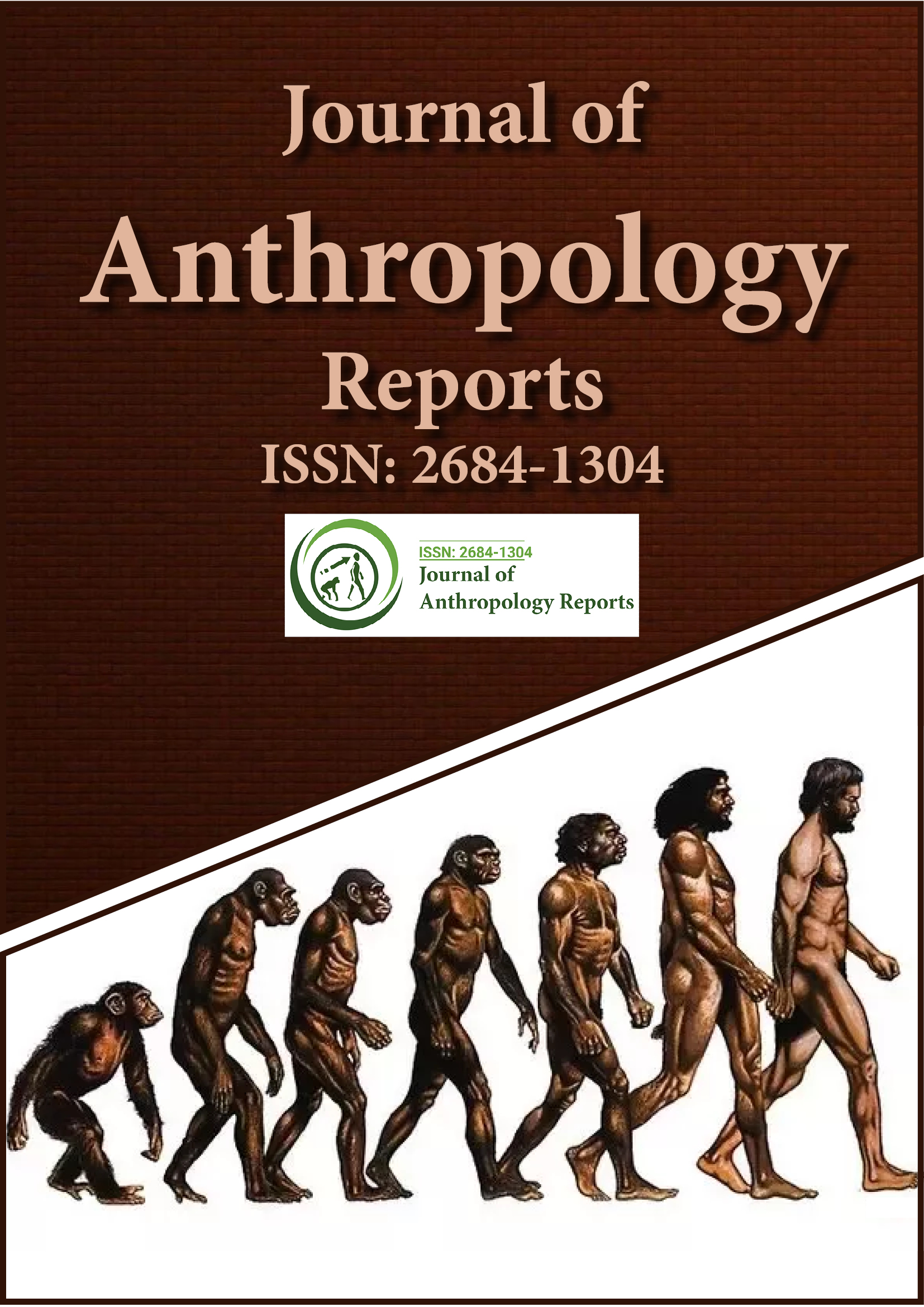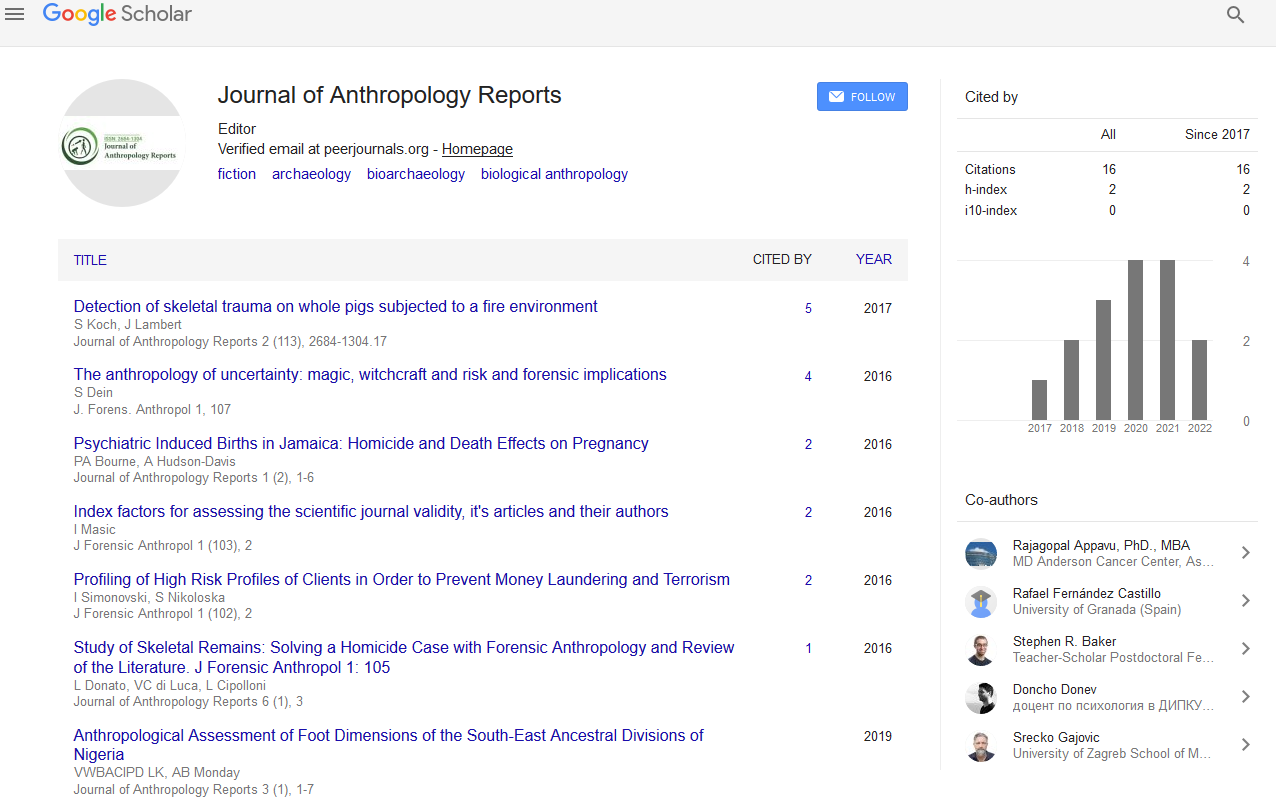Indexed In
- RefSeek
- Hamdard University
- EBSCO A-Z
Useful Links
Share This Page
Journal Flyer

Open Access Journals
- Agri and Aquaculture
- Biochemistry
- Bioinformatics & Systems Biology
- Business & Management
- Chemistry
- Clinical Sciences
- Engineering
- Food & Nutrition
- General Science
- Genetics & Molecular Biology
- Immunology & Microbiology
- Medical Sciences
- Neuroscience & Psychology
- Nursing & Health Care
- Pharmaceutical Sciences
Commentary - (2023) Volume 6, Issue 1
Significance of Amensalism in Shaping Ecosystems and Human Health
Pelir Rotim*Received: 03-Feb-2023, Manuscript No. JFA-23-20633; Editor assigned: 07-Feb-2023, Pre QC No. JFA-23-20633 (PQ); Reviewed: 24-Feb-2023, QC No. JFA-23-20633 (QC); Revised: 02-Mar-2023, Manuscript No. JFA-23-20633 (R); Published: 09-Mar-2023, DOI: 10.35248/2684-1304.23.6.154
Description
In ecology, the term Amensalism refers to a type of interspecific relationship between two different species, in which one species is negatively affected, while the other species is neither positively nor negatively affected. This type of interaction can be either direct or indirect, and it is often seen in natural ecosystems, where different organisms compete for limited resources such as food, shelter, or space.
Amensalism
Amensalism is a form of interspecific interaction, in which one species is negatively affected, while the other species is neither positively nor negatively affected. This type of relationship is often asymmetric, meaning that the effect of one species on the other is much greater than the effect of the other species on the first. In Amensalism, the negative effect on one species may be due to the production of harmful substances, competition for resources, or interference with its growth or reproduction. However, the other species does not benefit from the interaction in any way, although it may not be harmed either.
Examples of amensalism
Black walnut tree and other plants: Black walnut trees are known to release a chemical called juglone, which is toxic to many other plants. This chemical can inhibit the growth of nearby plants, reducing their ability to compete for resources. As a result, the black walnut tree can outcompete other plants and dominate the surrounding area.
Cattle and birds: Cattle grazing in a field can disturb the soil and create depressions where water can accumulate. These depressions can attract birds, which may feed on insects and other small animals living in the moist soil. However, the presence of cattle can also trample nests, destroy vegetation, and reduce the overall quality of the habitat for birds.
Antibiotic-producing bacteria and other bacteria: Some bacteria can produce antibiotics that kill or inhibit the growth of other bacteria in their vicinity. This can create a zone of inhibition around the antibiotic-producing bacteria, which prevents the growth of other bacteria. Although the antibiotic-producing bacteria are not affected by this interaction, they may benefit from having reduced competition for resources.
Trees and understory plants: In a forest ecosystem, trees can shade out understory plants, reducing their access to sunlight and limiting their growth. This can lead to a reduction in the diversity of plants in the understory, which can have cascading effects on the ecosystem.
Allelopathy: Some plants produce chemicals that inhibit the growth of other plants in their vicinity. For example, the invasive species garlic mustard can release chemicals that suppress the growth of native plant species, reducing the overall biodiversity of an ecosystem.
Significance of amensalism
Amensalism plays an important role in shaping the structure and dynamics of natural ecosystems. By creating negative interactions between species, Amensalism can influence the distribution and abundance of different organisms. For example, in the case of the black walnut tree, the release of juglone can create a competitive advantage for the tree, allowing it to dominate the surrounding area. This can have consequences for the diversity of plant species in the ecosystem, as well as for the animals that depend on those plants. Amensalism can also have practical applications in agriculture and forestry. For example, allelopathy can be harnessed to control the growth of weeds and other unwanted plants in crops. By using crops that produce allopathic chemicals, farmers can reduce the need for herbicides and other chemical controls, which can have negative environmental impacts.
In addition, understanding Amensalism can help us to predict and manage the effects of invasive species. Many invasive species are known to have allopathic effects, which can suppress the growth of native plant species and reduce biodiversity.
By identifying these interactions, we can develop strategies to prevent or mitigate the negative impacts of invasive species on native ecosystems.
Moreover, Amensalism can also affect human health. For example, antibiotic-producing bacteria can have important implications for the treatment of infectious diseases. Understanding how bacteria interact with each other can help researchers to develop new antibiotics that are more effective against resistant strains of bacteria.
Conclusion
In conclusion, Amensalism is an important type of interspecific interaction that can have significant effects on ecosystems, agriculture, and human health. By creating negative interactions between species, Amensalism can influence the distribution and abundance of different organisms, shaping the structure and dynamics of natural ecosystems.
Understanding Amensalism can also have practical applications in agriculture and forestry, as well as in the development of new antibiotics. As such, Amensalism is a valuable area of research in ecology and other fields.
Citation: Rotim P (2023) Significance of Amensalism in Shaping Ecosystems and Human Health. J Anthropol Rep. 6:154.
Copyright: © 2023 Rotim P. This is an open-access article distributed under the terms of the Creative Commons Attribution License, which permits unrestricted use, distribution, and reproduction in any medium, provided the original author and source are credited.

